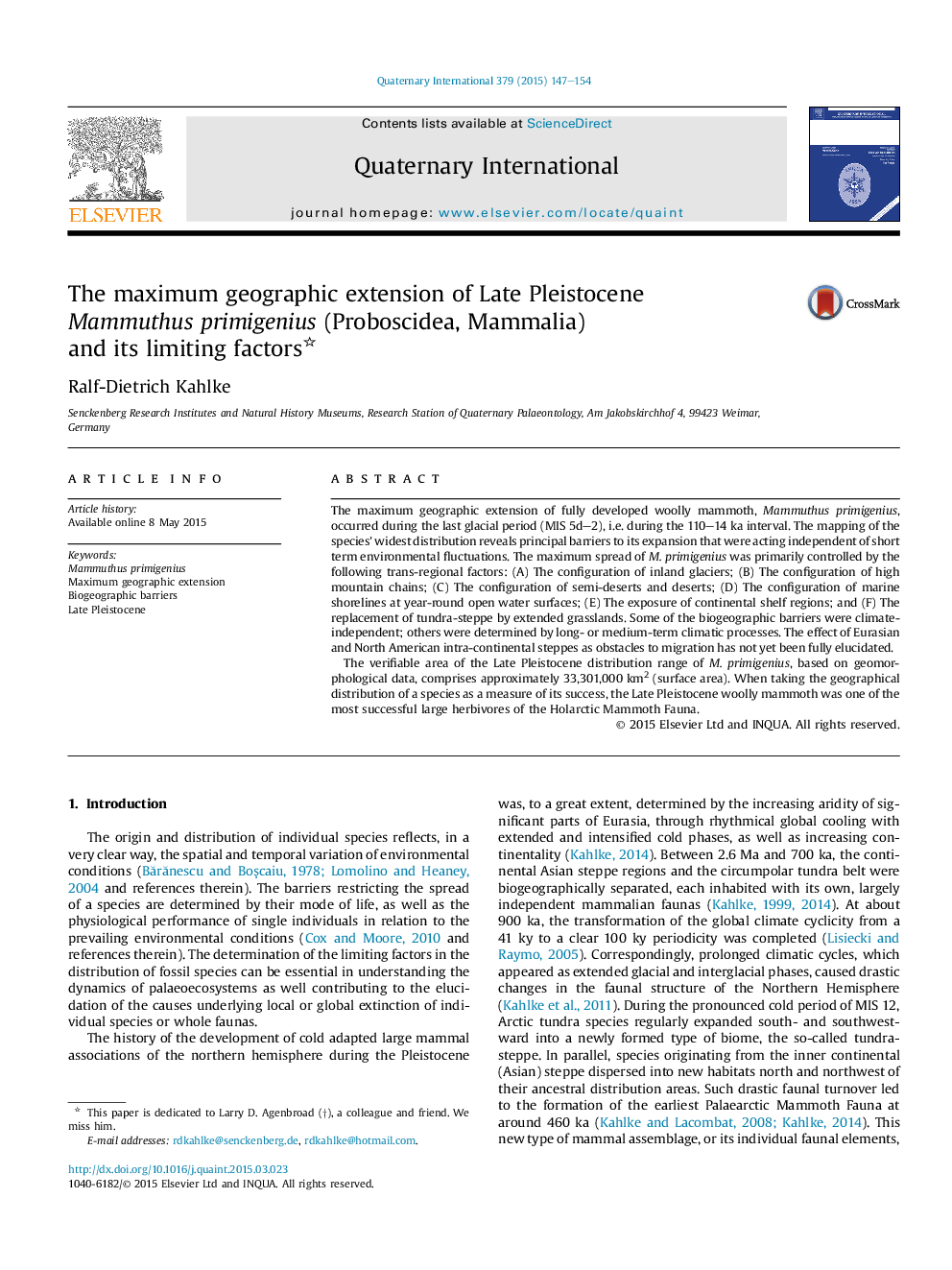| کد مقاله | کد نشریه | سال انتشار | مقاله انگلیسی | نسخه تمام متن |
|---|---|---|---|---|
| 1040657 | 1484118 | 2015 | 8 صفحه PDF | دانلود رایگان |

The maximum geographic extension of fully developed woolly mammoth, Mammuthus primigenius, occurred during the last glacial period (MIS 5d–2), i.e. during the 110–14 ka interval. The mapping of the species' widest distribution reveals principal barriers to its expansion that were acting independent of short term environmental fluctuations. The maximum spread of M. primigenius was primarily controlled by the following trans-regional factors: (A) The configuration of inland glaciers; (B) The configuration of high mountain chains; (C) The configuration of semi-deserts and deserts; (D) The configuration of marine shorelines at year-round open water surfaces; (E) The exposure of continental shelf regions; and (F) The replacement of tundra-steppe by extended grasslands. Some of the biogeographic barriers were climate-independent; others were determined by long- or medium-term climatic processes. The effect of Eurasian and North American intra-continental steppes as obstacles to migration has not yet been fully elucidated.The verifiable area of the Late Pleistocene distribution range of M. primigenius, based on geomorphological data, comprises approximately 33,301,000 km2 (surface area). When taking the geographical distribution of a species as a measure of its success, the Late Pleistocene woolly mammoth was one of the most successful large herbivores of the Holarctic Mammoth Fauna.
Journal: Quaternary International - Volume 379, 27 August 2015, Pages 147–154